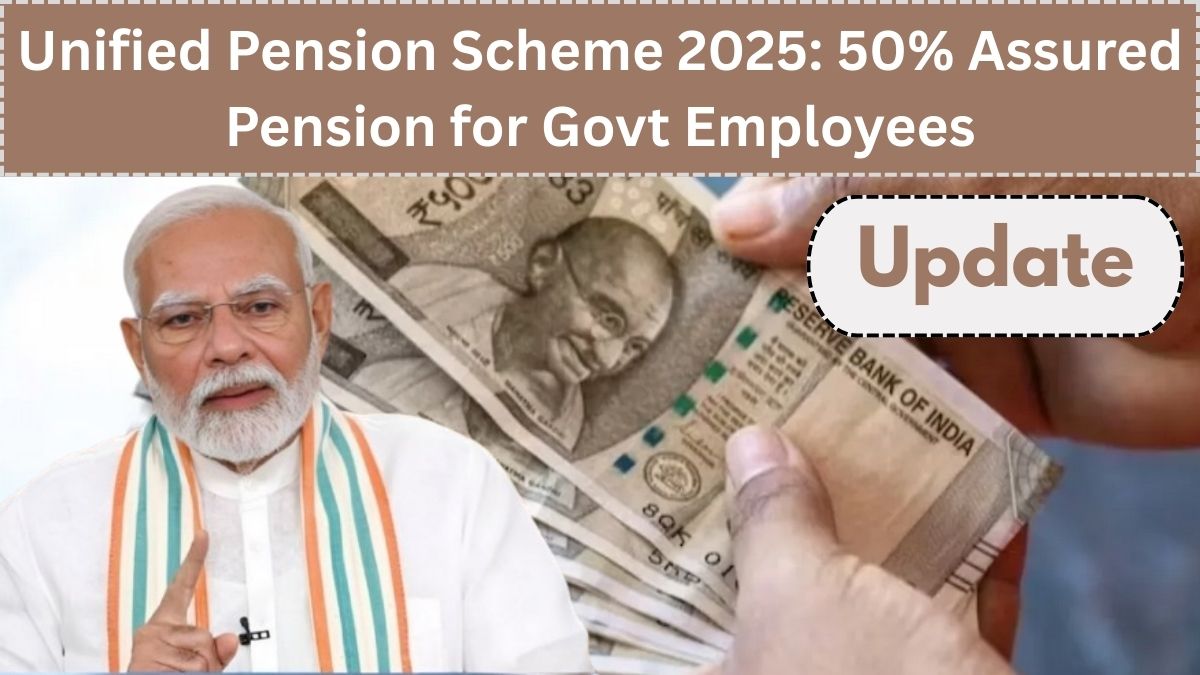The Unified Pension Scheme 2025 marks a major shift in India’s retirement policy landscape. With a guaranteed 50% pension for government employees, this reform aims to balance long-term financial security with the evolving demands of fiscal management. This initiative comes in response to growing concerns about the sustainability and adequacy of post-retirement income for central government staff under the existing system.
Understanding the Need for a New Pension Policy
For years, the New Pension Policy—also known as the National Pension System (NPS)—has been the default for government employees who joined after 2004. Unlike the old defined benefit system, NPS is market-linked, with no guaranteed payout. This led to growing dissatisfaction among employees concerned about unpredictable retirement income. The Unified Pension Scheme 2025 responds to this gap by ensuring a 50% assured pension in India, reintroducing stability without completely discarding the structure of the NPS.
Key Features of the Unified Pension Scheme 2025
The new scheme is structured to blend the best of the old and new systems. Here’s an overview of its core features:
Feature | Details |
|---|---|
Eligibility | All central government employees appointed after January 1, 2004 |
Minimum Pension Assured | 50% of the last drawn basic salary |
Contributory Nature | Both employee and employer continue contributions |
Pension Calculation | Based on a hybrid model combining NPS corpus and government support |
Payout Method | Monthly assured pension, separate from NPS annuity |
50% Assured Pension: What It Really Means
Under the Unified Pension Scheme 2025, eligible employees will receive a guaranteed pension equal to 50% of their last basic salary at the time of retirement. This guaranteed component provides a safety net, addressing the primary concern with the earlier NPS model—pension uncertainty due to market volatility. This move effectively reinstates the concept of central government pension with predictable benefits, giving financial assurance to public servants.
Hybrid Structure: Blending Security with Sustainability
The scheme introduces a hybrid pension model. Contributions will continue under the NPS format, but upon retirement, employees will not rely solely on the annuity market. Instead, the government guarantees a minimum pension amount, stepping in to make up the difference if the NPS yield falls short. This approach retains market discipline while shielding employees from market risks.
Fiscal Impact and Government Strategy
To manage the fiscal load of providing an assured pension in India, the government has proposed creating a Pension Stabilization Fund. This fund will be fed by a portion of employer contributions, interest income, and budgetary allocations. By planning ahead, the scheme seeks to avoid placing excessive stress on future budgets while maintaining the commitment to employee welfare.
Implications for Employees and the Government
For Employees:
Greater Retirement Security: They can plan their future with a known pension amount.
Restored Confidence: Trust in the pension system is likely to improve, reducing pushback from employee unions.
Flexible Withdrawal: A part of the NPS corpus may still be available for lump sum withdrawal, offering liquidity.
For the Government:
Administrative Efficiency: Unifying pension rules reduces complexity across departments.
Long-Term Planning: A predictable pension payout allows for better financial forecasting.
Comparison: Unified Pension Scheme vs. Previous Models
Criteria | NPS (Old) | Old Pension Scheme | Unified Pension Scheme 2025 |
|---|---|---|---|
Type | Defined Contribution | Defined Benefit | Hybrid |
Assured Pension | No | Yes (50%+DA) | Yes (50%) |
Market Risk | High | None | Moderate |
Flexibility | High | Low | Medium |
Government Liability | Low | High | Managed via fund |
Challenges and Considerations
While the Unified Pension Scheme 2025 is progressive, it’s not without challenges:
Implementation Complexity: Migrating data and ensuring accurate pension calculations can be daunting.
Inter-State Dynamics: State governments may demand similar provisions, increasing overall public expenditure.
Fund Management: Ensuring long-term sustainability of the Pension Stabilization Fund requires prudent financial governance.
What It Means for Future Policy Direction
This scheme is not just a pension reform; it’s a statement of intent. It reflects a policy shift toward balancing employee welfare with economic prudence. If successful, it could serve as a model for public sector retirement policies across developing economies grappling with aging populations and fiscal stress.
Frequently Asked Questions
Q1. Who is eligible for the Unified Pension Scheme 2025?
A: All central government employees who joined service after January 1, 2004, under the NPS, are eligible.
Q2. Is the 50% pension assured regardless of market performance?
A: Yes, if the NPS returns fall short, the government will compensate to ensure the 50% threshold is met.
Q3. Will employees still contribute under the new scheme?
A: Yes, the contributory nature remains, combining both employee and employer inputs.
Q4. How is this scheme different from the old pension system?
A: Unlike the old system, it keeps NPS contributions active but adds a guaranteed pension layer to reduce risk.
Q5. Is this scheme applicable to state government employees?
A: Currently, it applies only to central government employees. States may adopt similar models at their discretion.
Click here to know more.
